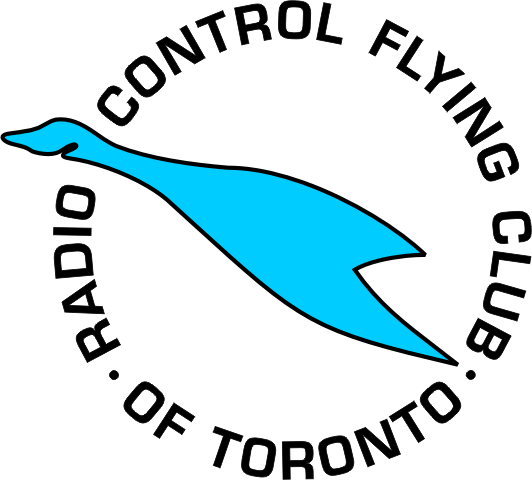About Our Club
![]() At
this time we are a club without a flying field. Various members are
actively looking for a new location nearby. We will keep you posted with
any new news.
At
this time we are a club without a flying field. Various members are
actively looking for a new location nearby. We will keep you posted with
any new news.
![]()
The Radio Control Flying Club of Toronto is a not-for-profit organization dedicated to the building and flying of radio controlled model aircraft. Our old field was located on the north side of Passmore Avenue one half kilometre east of Tapscott Road in the north east section of Scarborough. It has been officially closed due to nearby construction. Our new field is at 9769 Reesor Road, but at the present time is closed due to a conflict with Parks Canada. We had about 105 members in 2021 varying in age from fourteen to over ninety years young. The members' interests vary from .25 size Sport to Scale to Giant Scale. Power varies from glow to gas to electric. Up until recently most of the members were flying sport and scale, glow and gas powered aircraft, but in the past few years electrics are making great strides forward. Helicopters and Quads and Jets are also flown.
Our club was founded in 1957 by six gentlemen who were interested in furthering the interests of radio control model flying. In those days the club was known as the Toronto Radio Control Club. In 1967 the club was incorporated as the Radio Control Flying Club of Toronto (RCFCT) as it exists today. More information concerning the history of our club can be found here.
2022 Meeting Dates:
- Upcoming Virtual Meetings will be shown here
Meeting Location and Info:
Will advise when availableOther Information
Our flying season officially begins on January 1st. at about 10:00 AM. each year when a bunch of hearty souls, some of whom are hung over from the festivities of New Years Eve, brave the cold Canadian weather (eh!) to see who can be first to get their aircraft into the air successfully. There is usually a very good turn-out (20-30 members) considering the time of year and weather. Sometimes coffee is served, and sometimes donuts. Last year we were unable to carry on this tradition due to some problems with our landlord.
Except for that particular day, the majority of the members are content to stay indoors to work on their latest creation which they unveil at the start of the flying season in late April or early May. A few brave members fly during the warm and sunny days in the winter, sometimes on skis if we get some decent snowfalls. Now that electrics are so popular, indoor flying is catching on quickly, with more members enjoying the challenge of flying in the confines of a school gym. This is temporarily on hold because of Covid19.
Club membership fees for 2022 have increased to $200.00 for Open members (18 to 59 years of age). Senior's fees will be $150.00 (60 & over). Junior member's fees remain the same at $40.00 (under 18.) There is a $40.00 initiation fee for all new members (except Juniors) for the first year. If you wish to become a member of our club you can download all of the necessary forms from the Forms menu item under Membership. To join our club and fly model aircraft, you must also join the Model Aeronautic Association of Canada (MAAC). Among other things, they provide members with $5,000,000.00 in liability insurance. You are responsible for your membership in MAAC. Proof of MAAC membership is mandatory when you join our club unless you have no intentions of flying.
We have a Wings Program for new members to assist them in becoming competent pilots. Several of the more experienced members provide free instruction to student pilots. Flying instruction usually begins in early May and continues until the end of September. Ground instructors are sometimes available to assist the new students on the ground in getting their engines started, ensuring that their aircraft are air worthy, and other such things. Student times are not firmed up yet this year. Students must demonstrate that they can take off, perform some simple manoeuvres and land a training type aircraft safely and successfully several times in order to receive their "Wings". The length of time required to become proficient varies from a few weeks to more than a season in some cases. It really just depends upon each person's capabilities and the amount of "stick" time the new student is able to get in each week. Younger students usually require less time than more mature students. After receiving their "Wings", new pilots may fly on their own.
(copyright © 2000-2023 - RCFCT)
 Radio Control Flying Club of Toronto
Radio Control Flying Club of Toronto